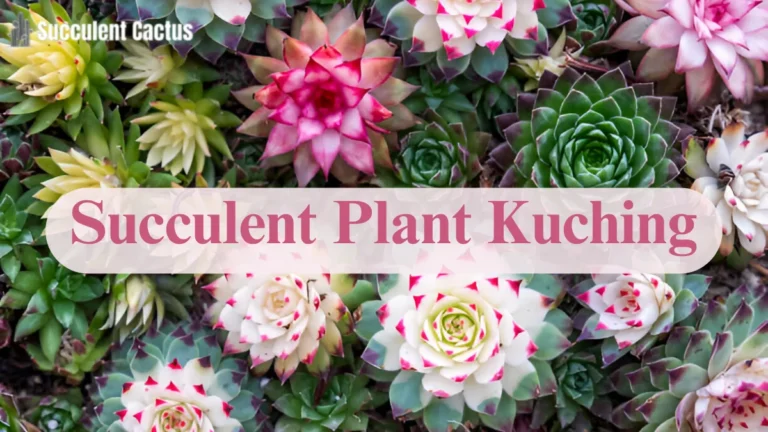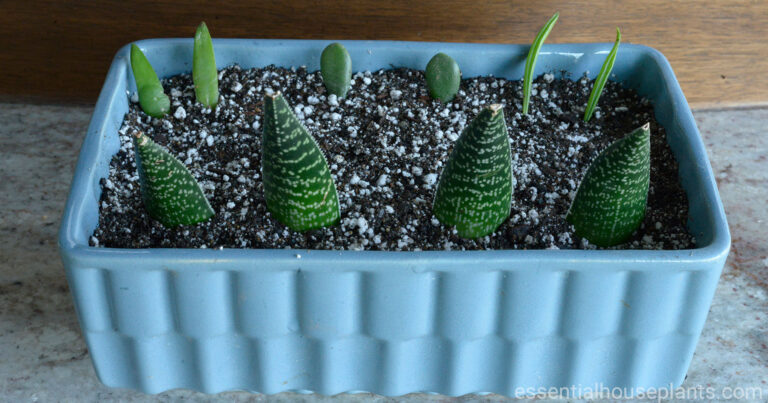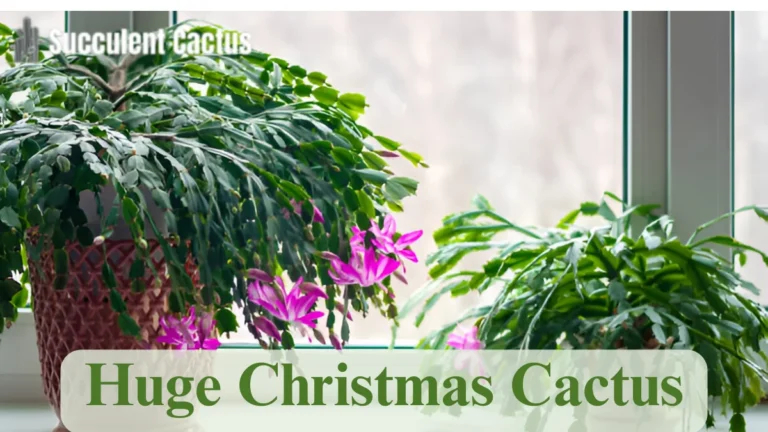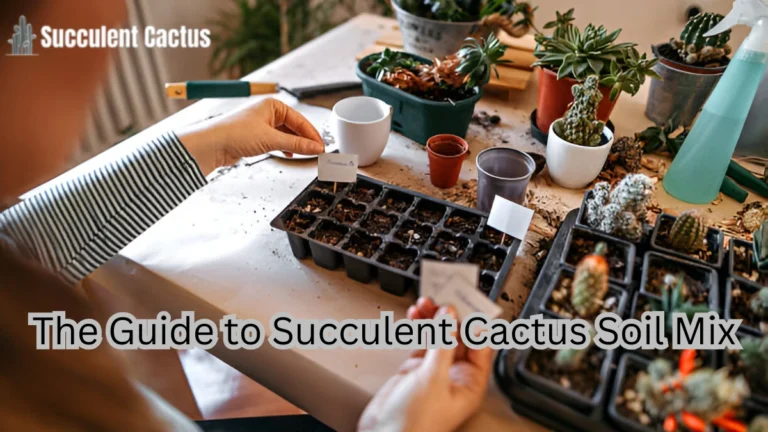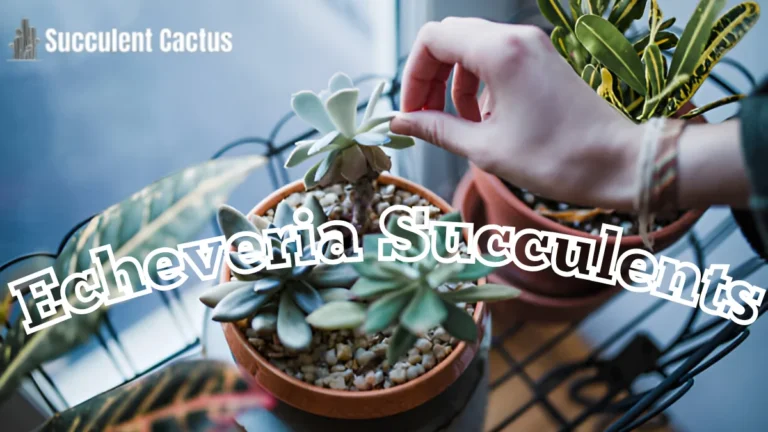The Fascinating World of Succulent Plants: Exploring the Succulent Plant Kingdom
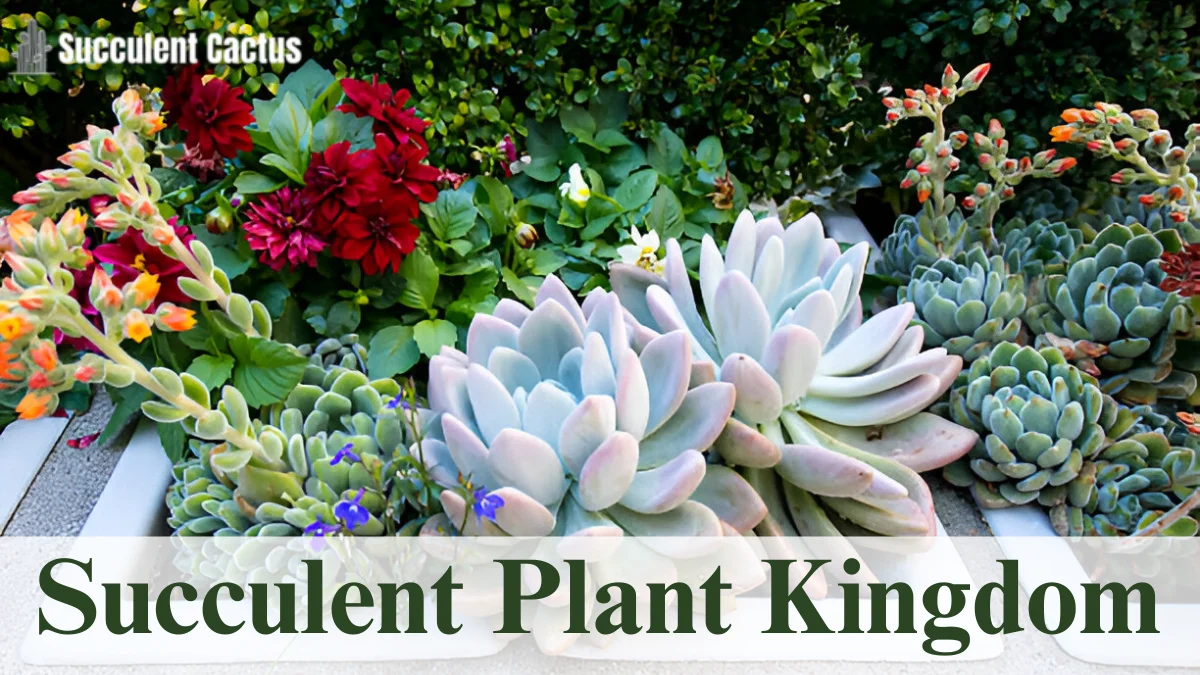
Succulent plants have become increasingly popular due to their beauty, variety, and relatively easy care requirements. They belong to a diverse kingdom of plants that thrive in arid conditions and are known for their ability to store water in their fleshy, thick leaves, stems, or roots. In this comprehensive guide, we’ll dive into the world of the succulent plant kingdom, explore different species, and provide tips on how to care for them effectively.
1. Understanding the Succulent Plant Kingdom
Succulent plants, classified under the kingdom Plantae, are known for their ability to store water. This unique characteristic allows them to survive in some of the harshest environments, such as deserts. But their diversity extends beyond just storing water—succulents come in various shapes, colors, and sizes, making them a fascinating plant group to study.
What Is the Succulent Plant Kingdom?
The succulent plant kingdom is a diverse group of plants that have evolved special adaptations to store water. These plants are part of several families, including Cactaceae (cactus family), Crassulaceae, Agavaceae, and Aizoaceae, to name a few. They are typically found in arid climates but can be grown in other environments with the right care.
Key Characteristics of Succulents
Succulents have thick, fleshy parts, such as leaves, stems, or roots, that are adapted to store water. They also have a waxy coating on their leaves to reduce water loss and often have specialized structures like spines or hairs to protect themselves from herbivores and excessive sunlight.
Why Succulents Are Popular
The popularity of succulents has soared due to their low-maintenance nature, unique aesthetics, and ability to purify the air. They also offer a wide variety of species, which makes them a great addition to homes, gardens, and even workplaces.
2. The Different Families of Succulent Plants
Succulent plants are spread across various families, each with its own unique characteristics and types of plants. Let’s explore some of the most common succulent families.
Cactaceae (Cactus Family)
The cactus family is the most well-known group of succulents. Cacti are native to the Americas and are characterized by their spiny stems and lack of leaves. They are typically adapted to survive in dry, desert climates.
Key Characteristics of Cacti:
- Thick, fleshy stems for water storage
- Spines instead of leaves for protection
- Flowers are often large, vibrant, and beautiful
Crassulaceae (Stonecrop Family)
The Crassulaceae family includes a wide range of succulents, including popular plants like Echeveria, jade plants (Crassula ovata), and sedums. These plants are native to various regions, including Africa, Asia, and Europe.
Key Characteristics of Crassulaceae:
- Thick, water-storing leaves
- Flowers that bloom in clusters
- Tolerant to drought and extreme conditions
Agavaceae (Agave Family)
Agaves are large succulents that are native to the Americas. They are famous for their rosette shape and are often used in landscaping and for producing products like tequila.
Key Characteristics of Agavaceae:
- Large rosette of thick, sword-shaped leaves
- Can live for many years before flowering
- Often used in landscaping and production
Comparison of Key Succulent Families
| Family Name | Common Plants | Native Regions | Key Features |
| Cactaceae | Cacti (e.g., Saguaro, Prickly Pear) | Americas (mainly deserts) | Thick stems for water storage, spines, large flowers |
| Crassulaceae | Echeveria, Jade Plant, Sedum | Africa, Asia, Europe | Water-storing leaves, drought-tolerant, clustered flowers |
| Agavaceae | Agave, Yucca, Century Plant | Americas (mainly deserts) | Large rosette leaves, long lifespan before flowering |
3. Popular Succulent Species and Their Unique Traits
While there are thousands of species within the succulent plant kingdom, certain species have become particularly popular for their unique beauty and easy care requirements. Here are some of the most famous succulents.
Aloe Vera
Aloe Vera is one of the most well-known succulent plants worldwide. It’s famous not only for its striking appearance but also for its many health benefits.
Unique Traits of Aloe Vera:
- Its gel has soothing properties for burns and skin irritations
- Stores water in its thick, fleshy leaves
- Requires minimal care but needs a lot of sunlight
Echeveria
Echeveria is a genus of succulents that forms rosettes of thick, colorful leaves. They are often used as ornamental plants in both gardens and indoor spaces.
Unique Traits of Echeveria:
- Rosette-shaped leaves that come in vibrant colors like purple, pink, and blue
- Tolerant of drought but sensitive to overwatering
- Popular as decorative plants
Jade Plant (Crassula ovata)
The Jade Plant, also known as the money plant, is a well-loved succulent due to its ease of care and long lifespan.
Unique Traits of Jade Plant:
- Glossy, thick leaves with a rich green color
- Associated with good luck and prosperity in many cultures
- Can grow quite large indoors
Comparison of Popular Succulent Species
| Succulent Species | Unique Traits | Care Requirements | Uses |
| Aloe Vera | Gel for burns, thick fleshy leaves, stores water | Requires plenty of sunlight, minimal watering | Skin care, air purification |
| Echeveria | Rosette-shaped leaves, vibrant colors, drought-tolerant | Sunlight and well-draining soil, avoid overwatering | Ornamental, decorative plant in gardens |
| Jade Plant (Crassula ovata) | Glossy leaves, associated with luck, grows large indoors | Needs indirect light, infrequent watering, well-draining soil | Indoor decor, symbol of prosperity |
4. How Succulent Plants Adapt to Harsh Environments
Succulent plants are known for their resilience, especially in harsh, arid climates. Let’s explore how they have evolved to thrive in such environments.
Water Storage Mechanisms
One of the primary adaptations of succulents is their ability to store water in their leaves, stems, or roots. This allows them to survive extended periods of drought. Succulent leaves are often thick and fleshy, providing a large surface area for storing water.
Specialized Leaves and Spines
Many succulents, such as cacti, have spines instead of leaves. These spines serve several purposes: they reduce water loss by minimizing the surface area, protect the plant from herbivores, and provide shade to prevent the plant from overheating.
CAM Photosynthesis
Succulents utilize a process known as Crassulacean Acid Metabolism (CAM) photosynthesis, which allows them to open their stomata at night instead of during the day. This reduces water loss and helps them thrive in arid conditions.
5. Succulent Plant Care Tips for Beginners
Taking care of succulents is relatively easy, but it does require some basic knowledge. Here are a few tips for beginners to help ensure your succulents stay healthy and vibrant.
Providing the Right Light
Succulents need plenty of sunlight to thrive. Ideally, they should receive about 6 hours of direct sunlight per day. If you are growing succulents indoors, a south-facing window is ideal.
Proper Watering Techniques
Overwatering is one of the most common causes of succulent death. It’s important to let the soil dry out completely between waterings. Most succulents need to be watered every 2-3 weeks, depending on the environment and season.
Choosing the Right Soil
Succulents prefer well-draining soil that doesn’t retain too much moisture. You can purchase special cactus and succulent soil mix, or make your own by adding sand or perlite to regular potting soil.
6. Common Problems and Solutions in Succulent Care
While succulents are generally easy to care for, they can still face a few issues. Here’s how to solve common problems.
Overwatering and Root Rot
Overwatering is the most common problem faced by succulent owners. This happens when the plant’s roots sit in wet soil for too long, leading to rot. The solution is simple: let the soil dry completely between waterings.
Pests and Diseases
Succulents are relatively pest-resistant, but they can still be affected by pests like aphids, mealybugs, and scale insects. Use insecticidal soap or neem oil to treat infestations.
Leggy Growth
If your succulent starts to grow tall and spindly, it’s likely not receiving enough light. Move your plant to a brighter location or supplement with grow lights to encourage healthy growth.
7. Propagating Succulents: A Beginner’s Guide
Succulents can be propagated easily from leaves, offsets, or cuttings. Here’s how to propagate your favorite succulent plants.
Propagating from Leaves
To propagate from leaves, gently remove a healthy leaf from the succulent. Let it dry for a few days to form a callus, then plant it in well-draining soil.
Propagating from Offsets
Many succulents, like the Jade Plant, produce offsets, or “babies,” at the base of the plant. These can be carefully separated and replanted to form new plants.
Propagating from Cuttings
Cuttings are another popular way to propagate succulents. Simply cut a healthy stem and let it callus over before planting it in soil.
8. The Role of Succulents in Landscaping
Succulents are not only great for indoor spaces but also make beautiful additions to outdoor landscapes. They can be used in xeriscaping, a landscaping technique that conserves water.
Benefits of Succulent Landscaping
Succulent landscaping requires less water than traditional gardens, making it ideal for drought-prone areas. Succulents also add texture and color to garden designs and require little maintenance once established.
Creative Succulent Arrangements
Succulent arrangements can be used in many creative ways. From container gardens to rock gardens, succulents can be arranged to create unique, low-maintenance landscapes.
Popular Succulent Landscape Designs
Succulent landscapes often feature vibrant colors and geometric patterns. Some common designs include succulent gardens in raised beds, hanging planters, and living walls.
9. Seasonal Care for Succulent Plants
Succulent plants have specific needs depending on the season. Here’s how to adjust your care routine throughout the year.
Summer Care
In summer, succulents are actively growing and need more water and light. Make sure your plants are getting enough sunlight and adjust your watering schedule accordingly.
Winter Care
In winter, succulents go dormant and require less water. Reduce watering and ensure your succulents are kept in a cool, dry environment.
Seasonal Fertilization
Succulent plants should be fertilized during their active growing season (spring and summer). Use a balanced, diluted fertilizer to promote healthy growth.
10. The Economic and Ecological Value of Succulent Plants
Succulent plants are not only valuable for their beauty but also for their economic and ecological benefits.
Economic Importance of Succulents
Succulent plants are an important part of the horticulture industry, with millions of plants sold worldwide. They also have medicinal value, especially Aloe Vera, which is used in the cosmetic and pharmaceutical industries.
Ecological Role of Succulents
Succulents play a crucial role in the ecosystems of dry regions. They help prevent soil erosion, provide habitat for wildlife, and contribute to the biodiversity of their environments.
Succulents and Sustainability
Succulent gardening is an eco-friendly way to conserve water. By using succulents in landscaping, individuals can reduce the need for water-intensive plants and help preserve natural resources.
11. Succulent Plant Kingdom: Fascinating Facts You Didn’t Know
Succulent plants are filled with surprising and unique characteristics. Here are some lesser-known facts that make them even more intriguing.
Succulent Plants Can Live for Decades
Some succulent plants, like the Agave, can live for decades before flowering. The Agave plant only flowers once in its lifetime, then dies, making it a long-living yet short-flowering species.
The Largest Succulent Plant
The world’s largest succulent is the Giant Agave (Agave americana), which can grow up to 10 feet tall.
Succulents Can Survive Extreme Temperatures
Succulents are highly adaptable plants. Some species can tolerate temperatures as low as -20°F, while others can thrive in temperatures over 100°F.
FAQs
Q1. What is the best soil for succulents?
Ans: Succulents thrive in well-draining soil. You can use cactus or succulent-specific soil or mix regular potting soil with sand or perlite to improve drainage.
Q2. How often should I water my succulents?
Ans: Water succulents every 2-3 weeks, but always allow the soil to dry out completely between waterings.
Q3. Can I grow succulents indoors?
Ans: Yes, succulents can be grown indoors as long as they receive sufficient sunlight. Place them in a bright location with at least 6 hours of direct light daily.
Q4. How do I prevent my succulent from getting leggy?
Ans: Ensure your succulent receives enough light. If it’s too leggy, move it to a sunnier spot or use grow lights to encourage healthy growth.
Q5. Can succulents survive the winter?
Ans: Yes, most succulents go dormant in the winter and require minimal care. Reduce watering and protect them from frost by bringing them indoors if necessary.
Conclusion: Embrace the Beauty of the Succulent Plant Kingdom
Succulent plants are a fascinating group with incredible adaptations that allow them to thrive in some of the harshest environments on Earth. From their ability to store water to their wide variety of species, succulents offer something for everyone. Whether you’re a beginner or a seasoned plant lover, understanding the succulent plant kingdom will help you care for your plants and appreciate their beauty even more.

